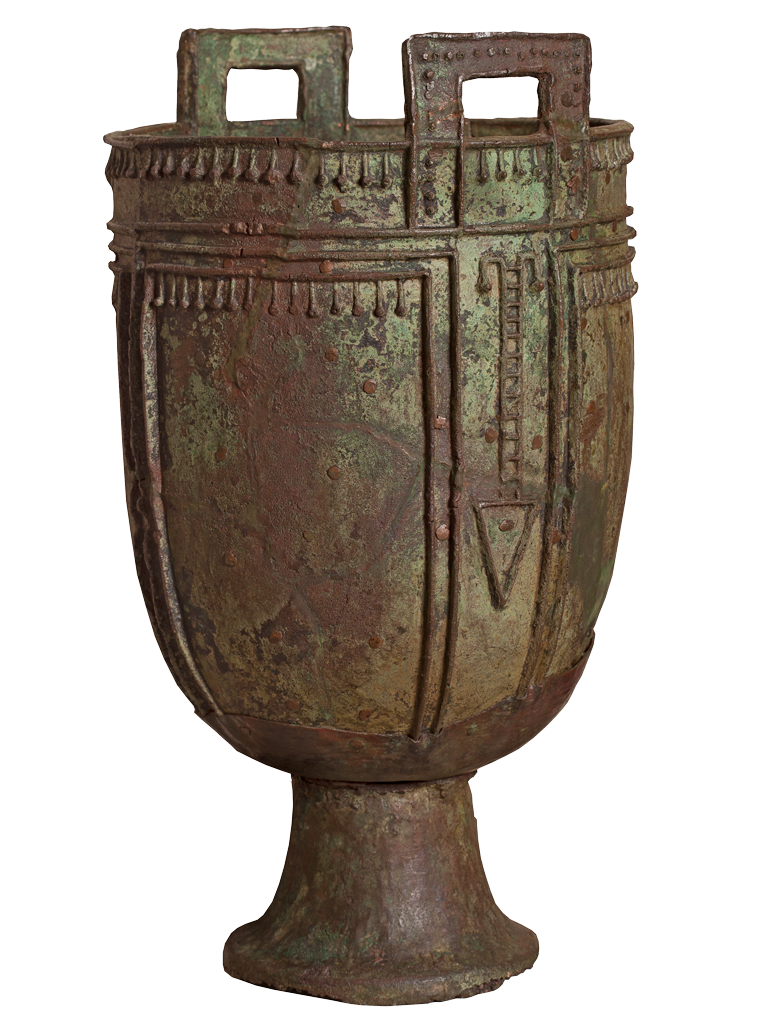Hunnish type caldron

A big bronze ornamented cauldron, pieced together of separate cast details connected by joint bars and rivets, is rightfully a symbol of the Migration period epoch. It was found on the bank of the Osoka river in Ulyanovsk Oblast. Such caldrons appeared on the Eastern Europe area simultaneously with invasion of the tribal confederation of hunnes in the end of the IV-V centuries, which lead off the most active stage of the Migration period. Findings of such cauldrons are known on the huge territory from the Urals to France. They mark migration of the strong tribal confederation leaded by hunnes from the east to the west. They also mark the back way of hunnes that went to the east to the southern Russian steppes after they were defeated by the Germanic peoples. Cauldrons for nomads of Eurasia had not only utilitarian, but also sacral meaning. They were tightly connected with the sun and fire cult. The division of their surface into four parts symbolized the cardinal directions.
Exhibits’ purposes of use – such cauldrons were used in daily living for cooking meat and during cult rituals with sacrifices.
Uniqueness – the relatively small number of findings of such cauldrons on such vast territories, as well as the production of miniature copies of them reveals a special attitude to them-they were protected, perhaps passed from generation to generation
